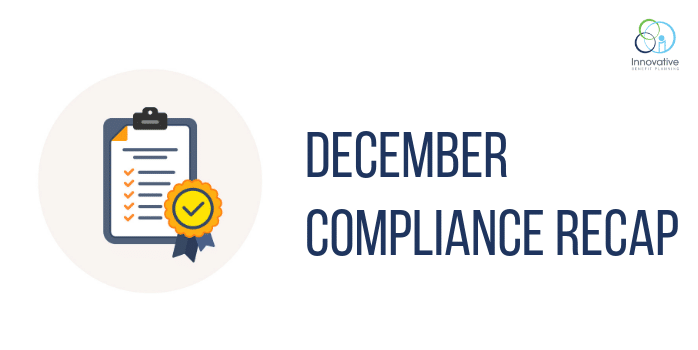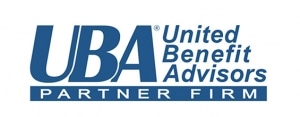| December was a relatively quiet month in the employee benefits world.
A U.S. District Court issued an order declaring that the Patient Protection and Affordable Care Act (ACA) is unconstitutional. The Equal Employment Opportunity Commission (EEOC) issued two final rules to remove certain wellness program incentives. The Department of Labor (DOL) updated its Form M-1 filing guidance for association health plans. U.S. District Court Declares ACA Unconstitutional On December 14, 2018, the U.S. District Court for the Northern District of Texas (Court) issued a declaratory order in ongoing litigation regarding the individual mandate and the Patient Protection and Affordable Care Act (ACA). The Court declared that the individual mandate is unconstitutional and declared that the rest of the ACA – including its guaranteed issue and community rating provisions – is unconstitutional. The Court did not grant the plaintiffs’ request for a nationwide injunction to prohibit the ACA’s continued implementation and enforcement. The Court’s declaratory judgment simply defined the parties’ legal relationship and rights under the case at this relatively early stage in the case. On December 16, 2018, the Court issued an order that requires the parties to meet and discuss the case by December 21, 2018, and to jointly submit a proposed schedule for resolving the plaintiffs’ remaining claims. On December 30, 2018, the Court issued two orders. The first order grants a stay of its December 14 order. This means that the court’s order regarding the ACA’s unconstitutionality will not take effect while it is being appealed. The second order enters the December 14 order as a final judgment so the parties may immediately appeal the order. On December 31, 2018, the Court issued an order that stays the remainder of the case. This means that the Court will not be proceeding with the remaining claims in the case while its December 14 order is being appealed. After the appeal process is complete, the parties are to alert the Court and submit additional court documents if they want to continue with any remaining claims in the case. At this time, the case’s status does not impact employers’ group health plans. However, employers should stay informed for the final decision in this case. Read more about the court case. EEOC Issue Final Rules to Remove Wellness Program Incentive Limits Vacated by Court On December 20, 2018, the Equal Employment Opportunity Commission (EEOC) issued two final rules to remove wellness program incentives. As background, in August 2017, the United States District Court for the District of Columbia held that the U.S. Equal Employment Opportunity Commission (EEOC) failed to provide a reasoned explanation for its decision to allow an incentive for spousal medical history under the Genetic Information Nondiscrimination Act (GINA) rules and adopt 30 percent incentive levels for employer-sponsored wellness programs under both the Americans with Disabilities Act (ADA) rules and GINA rules. In December 2017, the court vacated the EEOC rules under the ADA and GINA effective January 1, 2019. The EEOC issued the following two final rules in response to the court’s order. The first rule removes the section of the wellness regulations that provided incentive limits for wellness programs regulated by the ADA. Specifically, the rule removes guidance on the extent to which employers may use incentives to encourage employees to participate in wellness programs that ask them to respond to disability-related inquiries or undergo medical examinations. The second rule removes the section of the wellness regulations that provided incentive limits for wellness programs regulated by GINA. Specifically, the rule removes guidance that addressed the extent to which an employer may offer an inducement to an employee for the employee’s spouse to provide current health status information as part of a health risk assessment (HRA) administered in connection with an employee-sponsored wellness program. Both rules will be effective on January 1, 2019. Read more about the EEOC’s final rules. DOL Updates Form M-1 Filing Guidance for Association Health Plans On December 3, 2018, the Department of Labor (DOL) published its “10 Tips for Filing Form M-1 For Association Health Plans And Other MEWAs That Provide Medical Benefits” that provides plan administrators with information on when to file and how to complete portions of Form M-1. The DOL emphasizes that all multiple employer welfare arrangements (MEWAs) that provide medical benefits, including association health plans (AHPs) that intend to begin operating under the DOL’s new AHP rule, are required to file an initial registration Form M-1 at least 30 days before any activity including, but not limited to, marketing, soliciting, providing, or offering to provide medical care benefits to employers or employees who may participate in an AHP. Read more about the DOL guidance. Question of the Month Q. If an employee must increase the hours of childcare needed because the employee changes work schedules, may the employee increase the DCAP amount that the employee elects? A. Yes, increasing the hours of childcare is a permitted election change event that would allow an employee to increase the employee’s DCAP election amount consistent with the change in childcare cost. This information is general and is provided for educational purposes only. It reflects UBA’s understanding of the available guidance as of the date shown and is subject to change. It is not intended to provide legal advice. You should not act on this information without consulting legal counsel or other knowledgeable advisors.
|













